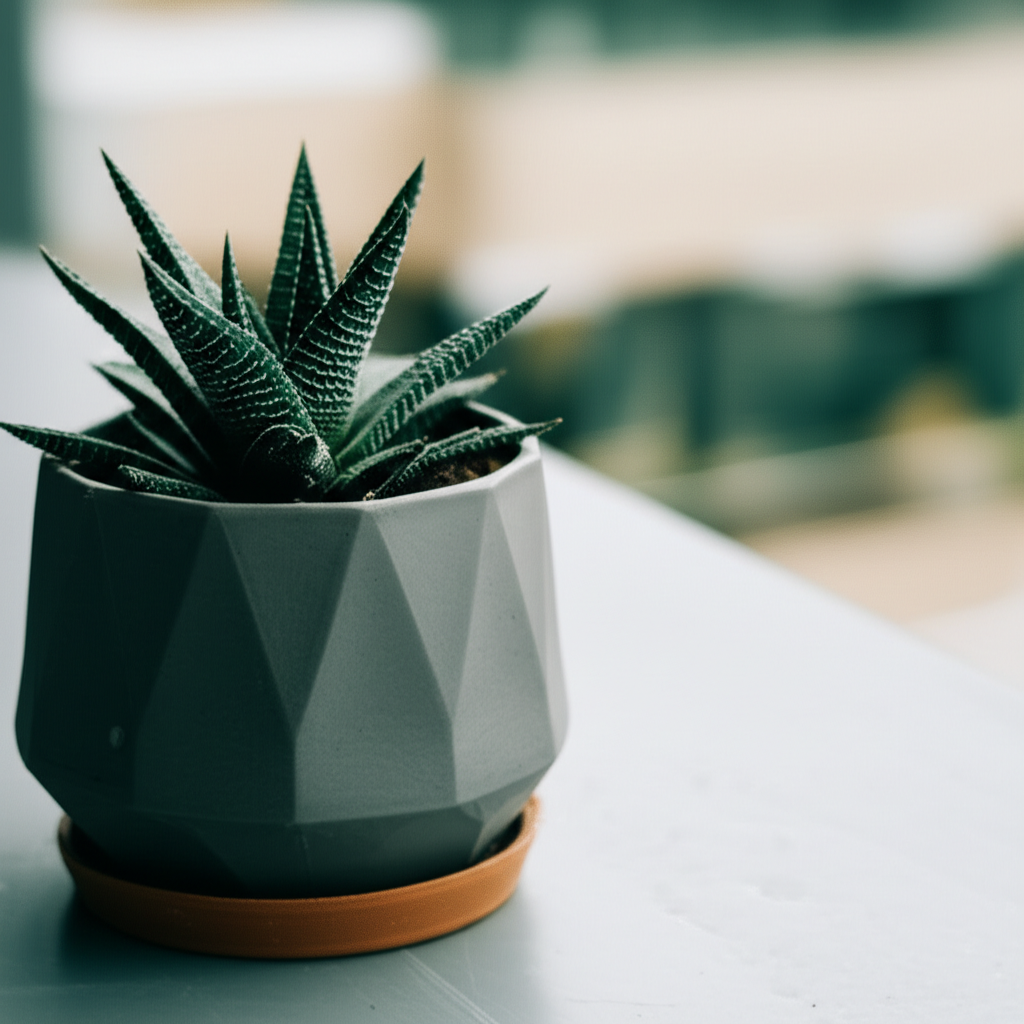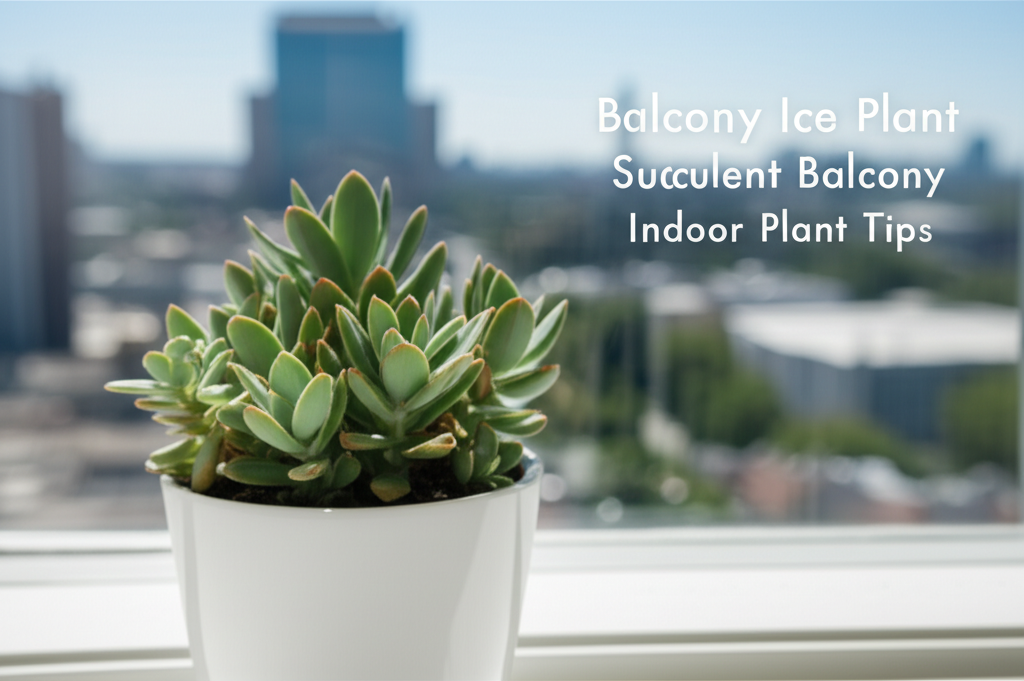Introduction: The Dazzling Charm of Ice Plants
Ice plants, scientifically known as Mesembryanthemum crystallinum and its many relatives, are a fascinating group of succulents prized for their unique crystalline structures that glisten in the sunlight, resembling a layer of frost. These captivating plants bring a touch of the extraordinary to any space, whether gracing a sunny balcony or adding a touch of living art to an indoor windowsill. Their low-maintenance nature and stunning visual appeal make them a popular choice for both novice and experienced plant enthusiasts. This comprehensive guide will delve into everything you need to know to cultivate thriving ice plants, from understanding their needs to troubleshooting common issues, ensuring your succulent garden flourishes.
Understanding the Ice Plant: What Makes Them Special?

The defining characteristic of most ice plants is the presence of specialized epidermal cells called papillae. These papillae are bladder-like structures that absorb and store water, and when they reflect sunlight, they create the signature shimmering “ice” effect. This adaptation is crucial for their survival in arid and semi-arid environments where they originate.
Key Characteristics of Ice Plants:
- Crystalline Papillae: The most distinctive feature, giving them their common name.
- Succulent Leaves: Thick, fleshy leaves that store water, allowing them to withstand drought.
- Vibrant Blooms: Many varieties produce daisy-like flowers in a spectrum of bright colors, including pink, yellow, orange, and white.
- Groundcover Habit: Some species spread horizontally, forming a dense, attractive groundcover.
- Drought Tolerance: Excellent ability to survive periods of low water availability.
Key Facts and Comparison: Ice Plant Varieties
While the term “ice plant” is often used broadly, there are numerous species and cultivars, each with subtle differences in appearance and growth habits. Understanding these variations can help you choose the perfect ice plant for your specific needs.
| Common Name | Scientific Name | Bloom Color | Growth Habit | Sunlight Needs | Drought Tolerance |
|---|---|---|---|---|---|
| Common Ice Plant | Mesembryanthemum crystallinum | White, pink | Spreading, herbaceous | Full Sun | High |
| Dew Plant | Mesembryanthemum nodiflorum | White | Low-growing, spreading | Full Sun | High |
| Carpobrotus | Carpobrotus edulis (Hottentot Fig) | Yellow, pink | Vigorous groundcover, trailing stems | Full Sun | Very High |
| Lampranthus | Lampranthus spectabilis | Vibrant pink, purple, orange, yellow | Bushy, upright to spreading | Full Sun | High |
| Delosperma | Delosperma cooperi (Hardy Ice Plant) | Vibrant magenta-pink | Low-growing, mat-forming | Full Sun to Partial Shade | High |
Cultivating Ice Plants: Essential Care Tips
Successful ice plant cultivation hinges on mimicking their native arid environments. This means providing ample sunlight, well-draining soil, and judicious watering.
Sunlight: The Key to Shimmer
- Requirement: Ice plants are sun-worshippers. They thrive in full sun, meaning at least 6-8 hours of direct sunlight per day.
- Balcony Placement: Position your ice plants on the sunniest side of your balcony, ideally south-facing or west-facing.
- Indoor Placement: Place them in the brightest window you have, such as a south-facing window. If natural light is insufficient, consider supplementing with a grow light.
- Signs of Insufficient Light: Leggy growth, pale leaves, and reduced or absent flowering are indicators that your plant isn’t getting enough sun.
Soil: Drainage is Paramount
- Ideal Mix: A well-draining succulent or cactus potting mix is essential. You can also create your own by combining potting soil with perlite or coarse sand in a 1:1 ratio.
- Why Drainage Matters: Ice plants are highly susceptible to root rot in waterlogged conditions. Proper drainage ensures excess water can escape the pot.
- Avoid Heavy Soils: Do not use dense, heavy garden soil as it retains too much moisture.
Watering: Less is More
- Drought Tolerant: Ice plants are adapted to dry conditions and prefer to dry out between waterings.
- How to Water: Water thoroughly when the soil is completely dry to the touch. This typically means watering less frequently in cooler months and more frequently during hot, dry periods.
- Check Soil Moisture: Stick your finger about an inch or two into the soil. If it feels dry, it’s time to water. If it feels moist, wait.
- Avoid Overwatering: This is the most common mistake. Overwatering leads to root rot, which is often fatal.
- Watering Method: Water the soil directly, avoiding getting water on the leaves, especially in cooler temperatures, as this can encourage fungal diseases.
Temperature and Humidity: Finding the Sweet Spot
- Ideal Range: Ice plants generally prefer warm temperatures, thriving in daytime temperatures between 70-80°F (21-27°C). They can tolerate higher temperatures as long as they are not waterlogged.
- Winter Hardiness: Many ice plants are not frost-tolerant. If you live in an area with freezing temperatures, you’ll need to bring your plants indoors or protect them. Some varieties, like Delosperma cooperi, are more cold-hardy and can survive mild frosts.
- Humidity: They prefer low humidity environments, which is why they are well-suited to sunny, well-ventilated spaces like balconies and indoor environments with typical household humidity levels.
Fertilizing: A Light Touch
- When to Fertilize: Ice plants are not heavy feeders. Fertilize sparingly, typically once in the spring and again in early summer, during their active growing season.
- Fertilizer Type: Use a balanced, water-soluble fertilizer diluted to half strength, or a succulent-specific fertilizer.
- Avoid Over-Fertilizing: Too much fertilizer can lead to weak, leggy growth and can even damage the roots.
Propagation: Expanding Your Ice Plant Collection
Ice plants are generally easy to propagate, allowing you to create new plants from cuttings or seeds.
Propagation from Cuttings:
- Timing: The best time to take cuttings is in spring or early summer when the plant is actively growing.
- Taking Cuttings: Using a clean, sharp knife or scissors, take stem cuttings that are 3-6 inches long.
- Drying Cuttings: Remove the lower leaves from the cutting and allow the cut end to dry and callous over for a day or two. This prevents rot.
- Planting Cuttings: Insert the calloused end of the cutting into a well-draining potting mix.
- Watering: Lightly mist the soil occasionally to keep it slightly moist until roots develop.
- Root Development: Roots typically form within 2-4 weeks. You can gently tug on the cutting to check for resistance, indicating root formation.
Propagation from Seeds:
- Sowing Seeds: Sow ice plant seeds on the surface of a well-draining potting mix in spring or early summer.
- Light and Warmth: Provide warmth (around 70°F/21°C) and bright, indirect light.
- Germination: Germination can take anywhere from a few weeks to a few months.
- Transplanting: Once seedlings are large enough to handle, they can be transplanted into individual pots.
Common Problems and Solutions
Even with their hardy nature, ice plants can encounter issues. Understanding these problems and their causes is key to maintaining healthy plants.
| Problem | Cause | Solution |
|---|---|---|
| Root Rot | Overwatering, poorly draining soil | Allow soil to dry out completely, repot in well-draining soil, reduce watering frequency. |
| Yellowing Leaves | Overwatering, poor drainage, insufficient sunlight | Check soil moisture, ensure good drainage, move to a sunnier location. |
| Mushy Stems/Leaves | Severe overwatering, fungal infection | Remove affected parts, improve drainage, reduce watering, ensure good air circulation. |
| Leggy Growth (Etiolation) | Insufficient sunlight | Move plant to a brighter, sunnier location. Prune back leggy stems to encourage bushier growth. |
| Pests (Mealybugs, Aphids) | Infestation, often on stressed plants | Wipe away with a damp cloth or cotton swab dipped in rubbing alcohol. For severe infestations, use insecticidal soap or neem oil. |
| Flowerless Plant | Insufficient sunlight, plant is too young, improper watering | Ensure adequate sunlight, water appropriately, and be patient as the plant matures. |
Balcony and Indoor Specifics
Adapting ice plant care for different environments is crucial for success.
Balcony Gardening:
- Wind Protection: While they enjoy sun, strong winds can dry out the soil and damage delicate stems. Consider placing them in a slightly sheltered spot or using windbreaks.
- Pot Size: Choose pots that are proportionate to the plant’s size. Too large a pot can retain too much moisture. Ensure pots have drainage holes.
- Temperature Fluctuations: Balconies can experience more extreme temperature shifts. Monitor your plants closely, especially during early spring and late autumn.
- Rainfall: Be mindful of how much rain your balcony plants receive. You may need to move them under cover during prolonged rainy periods to prevent overwatering.
Indoor Gardening:
- Light: As mentioned, the brightest window is essential. Supplement with grow lights if natural light is insufficient, especially during winter months.
- Air Circulation: Good air circulation helps prevent fungal diseases. Avoid overcrowding plants.
- Dusting Leaves: Periodically wipe down leaves with a damp cloth to remove dust, which can block sunlight and hinder photosynthesis.
- Watering Consistency: Indoor environments often have more stable temperatures, so you’ll need to adjust your watering schedule accordingly. Always check soil moisture.
Pruning and Maintenance
Regular pruning can help maintain the shape of your ice plant, encourage bushier growth, and remove any dead or damaged foliage.
Pruning Techniques:
- Deadheading: Remove spent flowers to encourage more blooms and prevent the plant from putting energy into seed production.
- Shaping: Trim back leggy or overgrown stems to maintain a desired shape and promote a fuller appearance. Cuttings can often be propagated.
- Removing Dead Foliage: Trim away any yellowed, brown, or damaged leaves to keep the plant looking tidy and to prevent disease.
Conclusion: Enjoying Your Sparkling Succulents
Ice plants offer a unique blend of resilience and visual appeal, making them an excellent addition to any balcony or indoor plant collection. By understanding their basic needs for sunlight, well-draining soil, and judicious watering, you can ensure these shimmering succulents thrive and bring a touch of natural sparkle to your living space for years to come. Embrace their low-maintenance charm and enjoy the dazzling display of their crystalline structures and vibrant blooms.


